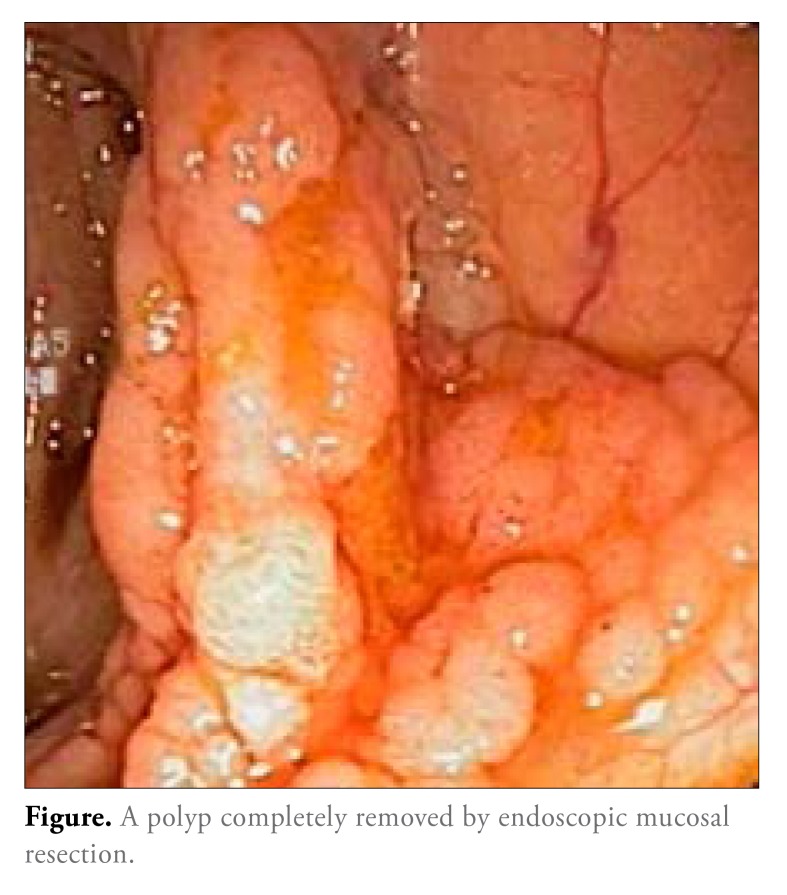G&H What factors are predictive of a difficult colonoscopy?
JW A difficult colonoscopy (ie, a colonoscopy in which the endoscopist has trouble getting through the entire colon or fails to do so) may be caused by several factors. One such factor is the presence of surgical adhesions. Another factor is body habitus. Women are more likely to have a difficult colonoscopy because it has been shown that they have longer colons than men packed into a smaller abdominal cavity, resulting in many twists and turns in the colon.
G&H Can specialized colonoscopes help endoscopists negotiate colons in difficult circumstances?
JW For patients in whom it is difficult to get through the sigmoid colon (eg, women who are young and slender, patients who have undergone pelvic surgery, or those with severe diverticular disease), it may be worthwhile for the endoscopist to use a pediatric colonoscope instead of a standard colonoscope. A pediatric colonoscope is a little smaller in caliber and has a shorter nose (deflecting tip) and tighter radius of curvature compared with a standard colonoscope. If intubation through the sigmoid colon is still not possible, I recommend using a gastroscope, which, due to its short radius of curvature (ie, very short nose), can easily negotiate the acute, tight bends of the sigmoid colon. However, a gastroscope cannot be used to perform an entire colonoscopy in the average patient because this instrument is shorter than a colonoscope, and its length is taken up by the bends and folds of the sigmoid colon. When used in a difficult sigmoid colon, the rigidity of the segment can act as a stent for the gastroscope, allowing it to be placed through the entire colon and reach the cecum.
G&H How should endoscopists handle tight colonic strictures (benign or malignant) that resist standard colonoscope passage?
JW When dealing with a tight stricture, the endoscopist should be very careful. If the stricture is very tight and does not allow passage of a standard colonoscope, the endoscopist should downsize to a pediatric colonoscope or a gastroscope, although the latter instrument can only be used if the stricture is in the left colon. As mentioned above, the gastroscope is short and tends to get lost in the folds of a normal sigmoid colon; no matter how many attempts are made to straighten it, the gastroscope may not be able to reach a proximal colonic stricture. It is especially important to be careful of strictures in colitis, particularly ulcerative colitis, because these strictures often turn out to be malignant, even though biopsies may not reveal an underlying malignancy.
G&H What precautions should be taken to prevent perforation during colonoscopy?
JW To prevent perforation during colonoscopy, it is very important to straighten the instrument continuously. The colon is rarely perforated by the tip of the colonoscope. Perforations usually occur when the endoscopist is pushing the colonoscope to get around a curvature. The curvature expands more and more as the colonoscope is being pushed in without advancing the tip, and all of a sudden, the outer wall of the colonoscope splits from the expanding loop. The endoscopist often does not see this tear because it is not made by the tip of the colonoscope; thus, the endoscopist may go beyond that difficult, angulated segment of colon all the way to the cecum, not realizing that a perforation has happened until the colonoscope is coming out, and the tip flops out through the perforated site, revealing abdominal organs. To prevent a perforation from developing, it is important not to push against fixed resistance, to pull back often, and to take out the loops of the colonoscope often. I usually end up pulling back almost as often as I push the colonoscope in.
G&H How can endoscopists improve the safety of colonic endoscopic mucosal resection?
JW The difficulty of endoscopic mucosal resection (Figure) lies in trying to remove colonic polyps from a colon wall that is very thin. There are no data showing how thin the distended colon wall is, but according to endoscopic ultrasound data collected for ulcerative colitis and Crohn’s disease, the thickness of the distended wall of normal controls varies from 1.4 mm to 2.3 mm. The wall is extremely thin, which makes it difficult to remove a polyp from the inner wall without damaging the outer wall. Thus, one of the most important aspects of removing a sessile polyp with a base larger than 1.5 cm in diameter is to inject fluid into the submucosal space, distending it so that the endoscopist can shave the polyp off the inner wall, with the submucosal fluid preventing thermal or snare injury to the deeper layers. Many endoscopists are concerned when they see a large polyp that is not safe to remove. However, once a large enough bleb is made in the submucosa and the polyp is raised sufficiently, the endoscopist can safely take out the polyp in a piecemeal fashion. I would advise a concerned endoscopist to act as if he or she is dealing with a small polyp and just remove it in small pieces (<2 cm) rather than try to remove large chunks of tissue.
G&H What are the challenges of performing a colonoscopy in patients with postsurgical anatomy, and how can these challenges be handled?
JW For patients with postsurgical anatomy, often involving gynecologic surgery, it is important to pull back the colonoscope to try to make it as straight as possible when intubating through the surgical area. Often the biggest difficulty is trying to get through the rectosigmoid junction, which is approximately 20 cm from the anus, without pushing and causing a perforation while making a large loop. When I approach this area, I turn the colonoscope markedly right, lock the right/left control in that position, and then torque the colonoscope clockwise, jiggling it in and out so that the tip will gradually rotate from 3 o’clock to 6 o’clock to 9 o’clock. Once the tip reaches 9 o’clock, the colon lumen is almost always seen above, and the endoscopist can advance the colonoscope with the assistance of abdominal pressure. In my opinion, abdominal pressure is one of the unsung adjuncts of colonoscopy and is not used enough by endoscopists. Colonoscopy can be much easier to perform by externally manipulating abdominal contents (ie, pushing them from the outside).
G&H Is endoscopic decompression of sigmoid volvulus useful?
JW Yes, decompression of sigmoid volvulus is extremely useful for facilitating immediate relief of the obstruction. I usually tape a wide-caliber tube with large openings to the colonoscope just distal to the bending section, which allows me to easily manipulate the tip. The colonoscope should be advanced up to the volvulus and popped through it, resulting in the release of a tremendous volume of fluid contents. The colonoscope should be advanced through the twisted area fairly quickly until the tube taped to the colonoscope enters the proximal bowel. The end of the taped tube should be directed into a bucket so that it does not spill out.
In addition, age may predict the difficulty of a colonoscopy. The younger the person, the more pain may be experienced during colonoscopy due to tight mesenteries; over time, mesenteries become more elastic and, thus, more lax. Therefore, young, slender women comprise the most difficult category of patients for colonoscopy.
During colonoscopy, there are 2 places where difficulty can occur. One is the sigmoid colon, where it can be difficult to get around the acute bends of the rectosigmoid and the sigmoid descending colon junction. This problem is found in young, slender women as well as patients who have had pelvic surgery, such as a hysterectomy or another gynecologic surgery. The second place where difficulty can arise during colonoscopy is the hepatic flexure, particularly in tall men or obese patients. In these patients, the colonoscope can get lost in the long colon and the very tall or large splenic and hepatic flexures, making it difficult to reach the end of the colon.
For navigating around the hepatic flexure in tall men or obese patients, I recommend using a heavier colonoscope, such as a standard adult colonoscope with variable stiffness, which will keep the instrument straighten Once the more rigid colonoscope goes through the bends and folds of the sigmoid colon and splenic flexure, the cecum is almost always reached.
In general, I prefer to use a pediatric colonoscope for my primary instrument. However, an extremely slender colonoscope has recently been developed by several instrument manufacturers that is ideal for patients in whom it is difficult to get around the sigmoid colon because the tip of this new instrument bends very acutely and acts more like a gastroscope than a colonoscope (except for being very long). When using this very flexible and, thus, floppy instrument, it is often helpful to also use a wire stiffener (such as a steel guidewire) to keep the colonoscope straight so that the endoscopist can intubate the entire colon.
I rarely try to dilate a stricture to get through it for diagnostic purposes, although I use a balloon for dilation of a symptomatic benign stricture.
It is also important to aspirate air once an open snare is placed over the polyp because, as air is removed, the circumference of the colon decreases, as does the polyp footprint. However, since the polyp does not change in volume as the base becomes smaller, it actually rises up into the snare, making it much easier to remove.
Figure.
A polyp completely removed by endoscopic mucosal resection.
Biography

Suggested Reading
- Anderson JC, Messina CR, Cohn W, et al. Factors predictive of difficult colonoscopy. Gastrointest Endosc. 2001;54(5):558–562. doi: 10.1067/mge.2001.118950. [DOI] [PubMed] [Google Scholar]
- Rex DK. Achieving cecal intubation in the very difficult colon. Gastrointest Endosc. 2008;67(6):938–944. doi: 10.1016/j.gie.2007.12.028. [DOI] [PubMed] [Google Scholar]
- Witte TN. Enns R The difficult colonoscopy. Can J Gastroenterol. 2007;21(8):487–490. doi: 10.1155/2007/520431. [DOI] [PMC free article] [PubMed] [Google Scholar]



